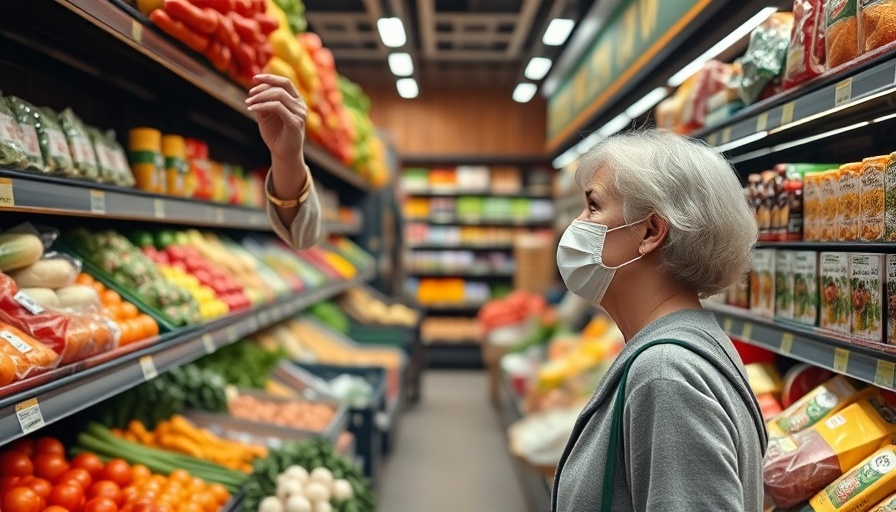
New SNAP Restrictions: Navigating the Changes
In a significant policy shift, Iowa's Supplemental Nutrition Assistance Program (SNAP) will see new restrictions on what recipients can buy starting January. These changes, approved by the USDA, come as part of an overarching strategy by Governor Kim Reynolds aimed at combating rising obesity rates in the state. However, while the intent is to encourage healthier eating habits, the resulting guidelines have sparked confusion among recipients and advocates alike.
What Can and Can’t Be Bought?
The new restrictions are based on sales tax exemptions rather than nutritional science, causing some peculiar exclusions. While recipients will still be able to purchase essential items like fruits, vegetables, milk, eggs, and meat, they will also be allowed to buy items like chips and ice cream. In stark contrast, some healthy snacks, such as certain granola bars and trail mixes, will be prohibited.
This duality raises concerns about the message being sent to low-income individuals and families who rely on these benefits; while soda and candy are restricted, unhealthy snack options remain available. This contradiction in the guidelines highlights a critical gap in the logic behind the policy, compelling many to question its efficacy.
Educating the SNAP Recipients
Luke Elzinga from the Iowa Hunger Coalition emphasizes the necessity of educating SNAP recipients about the new regulations to avoid confusion at checkout lines. "It’s essential to make sure that recipients know what they can and cannot buy, as this could significantly impact their shopping experience," he explains. Moreover, he worries that these changes could lead to increased stigma for those enrolled in SNAP, drawing unwanted attention during shopping trips.
Wider Context of SNAP Changes Across the U.S.
Iowa is not alone in this initiative; other states, including Nebraska, are following suit with similar restrictions. As noted by Robert F. Kennedy Jr., Secretary of the U.S. Department of Health and Human Services, a large influx of requests for SNAP waivers has surfaced nationwide, indicating a broader trend among Republican-led states to tighten the reins on what can be purchased with food assistance.
Understanding the Root Issues
Elzinga argues that the restrictions address symptoms rather than root causes of health issues faced by low-income citizens. "The primary barrier to healthier eating for those on SNAP is the high cost of nutritious food," he asserts. A more strategic solution, as suggested by advocates, would be to expand programs like the "Double Up Food Bucks," which provides incentives for SNAP recipients to purchase locally grown fruits and vegetables. By making healthy food more affordable, the program could foster real, positive change in dietary habits.
Local Perspectives and Opinions
The community response to the changes has been mixed, with some praising the intent while others express skepticism about execution. The root of dissent lies in how these guidelines may inadvertently imply a lack of trust in SNAP recipients to make better food choices for themselves and their families. Advocates insist that empowering individuals to choose their foods, along with support in accessing affordable, healthy options, would be far more effective than blanket restrictions.
Looking Ahead: Possible Future Implications
As Iowa implements these changes, the outcomes will be closely monitored by observers both within the state and nationwide. The intersection of public health policy and food access is complex, and how these new SNAP restrictions play out could set precedents for future legislation and innovations in food assistance programs.
Ultimately, while the intent to promote healthier eating is commendable, effective strategies must be rooted in a comprehensive understanding of low-income families’ needs. Only then can we hope to combat the rising rates of obesity and associated health problems in sustainable ways.
 Add Row
Add Row  Add
Add 




 Add Row
Add Row  Add
Add 

Write A Comment